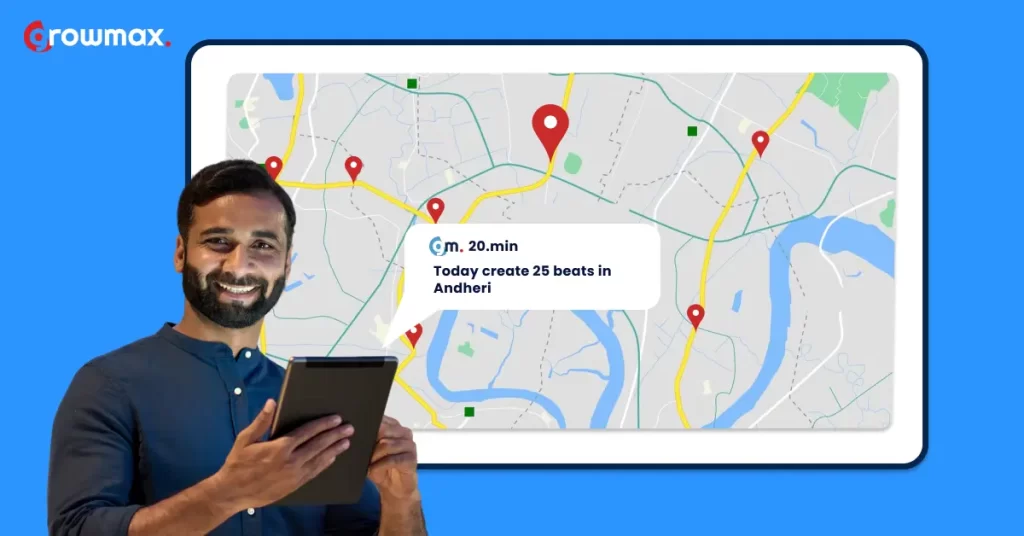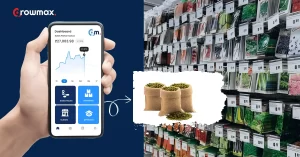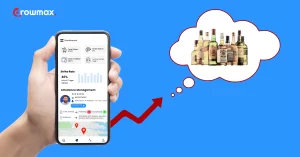It is usual to see salespeople fuzzing around unfamiliar locations with the intent to search out the correct addresses of outlets they are assigned to visit in a day. However, they grapple not just with their constrained time but also with achieving their targets, eventually affecting the revenue of brands.
Any consumer goods brand considers ‘time’ and ‘energy’ the most critical matrixes to its success. The former matters as it is the turnaround position of brands in the competitive market, and the latter means the productivity and efficiency of team members.
In the fast-moving consumer goods market, there is a requirement for contemporary solutions to productivity-related bottlenecks. For instance, the disorganization of beat plans leads to confusion and a sudden drop in the execution of sales reps.
What is beat optimization?
By guiding them through its advanced analytics. it is vital to ensure that field reps spend less time on the streets and more in stores.
It amplifies the efficiency of each sales rep by getting them optimized sales routes to market as it has access to real-time visibility on the ground.
Moreover, beat plans (optimized with tools) are not just restricted to cutting travel time or distance but have proved cost-effective for brands.
On the other hand, the primary objective of beat optimization is to focus on tailoring the productivity of businesses’ field workforce and saving resources with the most excellent efficiency.
What are the challenges faced by FMCG and CPG brands in designing beats?
Brands in the consumer goods market can encounter several pitfalls, but sticking to the old-fashioned methods of beat planning is the most troublesome, especially in the 21st century. Here are some of the significant bottlenecks that brands must have a look at:
-
Lack of accuracy
Many consumer goods brands need to plan effective beats for their field sales reps, leading to inefficiencies in their performance.
Manual planning of routes not only takes ample amounts of time but is also worthless in accomplishing field-related objectives.
For instance, a sales rep failed to meet a retailer in his outlet at the assigned time, owing to taking a long route with traffic congestion.
-
Occurrence of useless cost
Planning beats manually is not just constrained to ineffectiveness, though it unnecessarily enhances business operational costs.
Due to suboptimal routes, excessive fuel consumption is one of the ordinary sources of raising brands’ expenses, leading to unprofitability.
Furthermore, the most significant expense of any consumer goods brand is mainly incurred in their logistics due to unoptimized beats.
-
Competitive advantage
Consumer goods brands fail to remain competitive in the fast-paced market because they resist adapting to evolving customer demands.
For instance, brands that fail to deliver orders on time make their operations slower than their competitors, who utilize optimized tools to do that, ultimately giving them an edge.
-
Customer satisfaction
An inefficient beat plan wastes the precious time of sales executives in achieving their targets and affects their ability to focus on customers’ needs.
Lastly, customers prefer to avoid being entertained or approached by brands with a negative image in the market, which most likely happens if they don’t consider upgrading their beat planning system.
What are the benefits brands get post-beat optimization set up?
Onboarding beat optimization tools come out with attributes that eliminate the challenges (discussed above) that consumer goods brands deal with. Alongside, it assists brands in making informed moves with its advanced algorithms.
-
shining the process of planning routes
- Efficient beat plans aid field sales personnel visit a large number of retail stores within a predefined time
- It furnishes real-time updates and adjustments on traffic congestion, weather events, and other disruptions to minimize inefficacy
- Moreover, the system determines the sequence of drivers’ stops considering a few factors like new orders, availability, and time window
-
No more errors in decision-making
- Real-time Insight into the performance of each sales rep working in the field guides businesses in making informed and structured decisions
- Data-driven decisions eventually ensure efficient allocation of resources and proactive issue resolution
- Long-term planning, investment decisions, and expansion strategies for growth are some of the merits of optimized beat tools
-
Gain access to customized reports
- The beat optimization tool has a wide range of features, including pre-built reports covering route adherence, utilization of resources, and so on.
- Brands can now look into crucial data points via interactive software dashboards for analyzing and identifying market trends.
- Lastly, relevant reports enhance the possibility of accuracy in achieving business goals.
-
Additional benefits
If beats are optimized with utmost exactness, the brands’ operations get streamlined, easing the workload.
Competitors stuck to manual planning of beats couldn’t utilize time effectively, though brands evolving with technology would benefit a lot.
With beat optimization, consumer goods brands can even focus on the issue of environmental sustainability, i.e., fuel consumption and carbon footprint.
Conclusion
It is significant to understand that businesses can only move ahead in this crowded consumer goods market with onboarding advanced technology like beat optimization by Growmax Bi.




